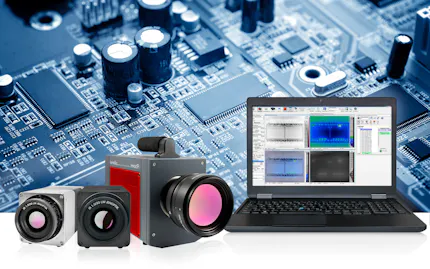Thermographic Analysis of Mechanical Processes
In our online event, we present the use of thermography for process control and for researching friction processes. Our experts explain how to select the right IR camera for your specific task and which functions of InfraTec IR cameras are essential for your application.

Current Appointments
- Thermographic Analysis of Mechanical Processes (english)Virtual
Date
2026-04-29, 4:00 AM EDT – 6:00 AM EDTRegister now
Friction Generates Heat
Friction is omnipresent. External friction between contacting outer surfaces of solids occurs, for example, in the rolling resistance of vehicles or in the abrasion of mechanical connections. Internal friction is effective in deformation processes within solids, liquids and gases between neighboring particles.
Typical of all friction processes is that heat is generated. This heat can be made visible and measurable using thermography. High-resolution thermal IR cameras allow the smallest temperature differences or temperature gradients to be determined – even in fast processes.
Thermal imaging cameras from InfraTec can not only be used to monitor mechanical wear processes (machine health), but also to detect crack formation or determine material strength – they also make an indispensable contribution to experimental mechanics. In addition to tribological measurements, friction processes can be comprehensively analyzed with regard to quality and quantity, for example the behavior of lubricating oils up to the point of film breakage or the deformation-mechanical properties of material composites under tensile and compressive stress.
Would you like to learn more about the use of thermography for process control and the study of friction processes?
Then register for our online event "Thermographic Analysis of Mechanical Processes".
A Glimpse at the Online Event
General information about thermography and InfraTec
Fundamentals of friction
Analyzing friction using thermography
Thermography in materials testing
Thermal imaging cameras in the development and monitoring of mechanical assemblies
Thermal stress analysis with active thermography


